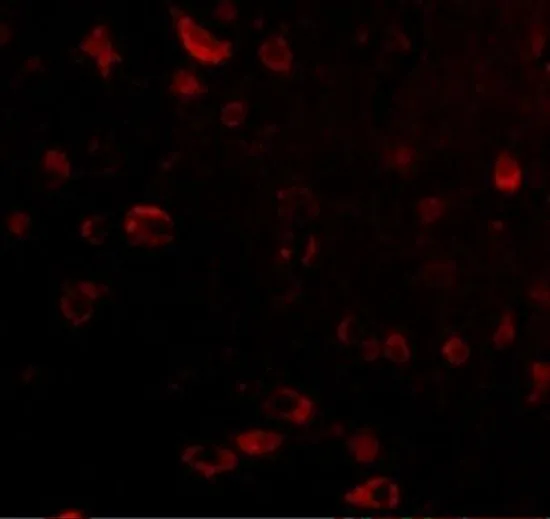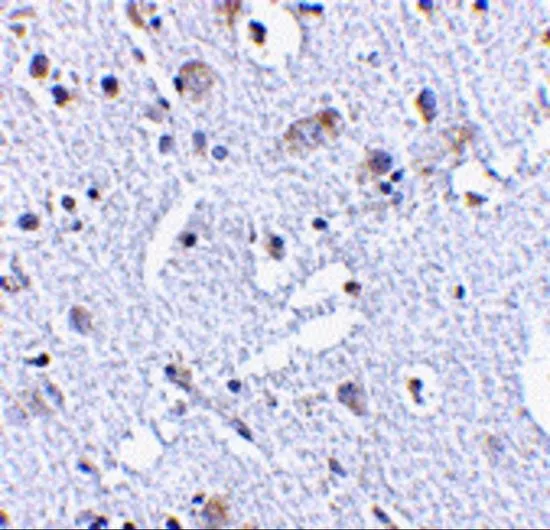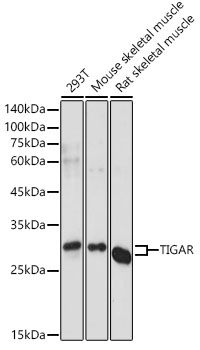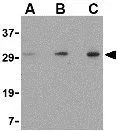
IHC-P analysis of human brain tissue using GTX31307 TIGAR antibody. Working concentration : 20 microg/ml
TIGAR antibody
GTX31307
ApplicationsWestern Blot, ELISA, ImmunoHistoChemistry, ImmunoHistoChemistry Paraffin
Product group Antibodies
TargetTIGAR
Overview
- SupplierGeneTex
- Product NameTIGAR antibody
- Delivery Days Customer9
- Application Supplier NoteWB: 0.5 - 2 microg/mL. IHC-P: 2.5 microg/mL. *Optimal dilutions/concentrations should be determined by the researcher.Not tested in other applications.
- ApplicationsWestern Blot, ELISA, ImmunoHistoChemistry, ImmunoHistoChemistry Paraffin
- CertificationResearch Use Only
- ClonalityPolyclonal
- Concentration1 mg/ml
- ConjugateUnconjugated
- Gene ID57103
- Target nameTIGAR
- Target descriptionTP53 induced glycolysis regulatory phosphatase
- Target synonymsC12orf5, FR2BP, fructose-2,6-bisphosphatase TIGAR, TP53-induced glycolysis and apoptosis regulator, fructose-2,6-bisphosphate 2-phosphatase, probable fructose-2,6-bisphosphatase TIGAR, transactivated by NS3TP2 protein
- HostRabbit
- IsotypeIgG
- Protein IDQ9NQ88
- Protein NameFructose-2,6-bisphosphatase TIGAR
- Scientific DescriptionThis gene is regulated as part of the p53 tumor suppressor pathway and encodes a protein with sequence similarity to the bisphosphate domain of the glycolytic enzyme that degrades fructose-2,6-bisphosphate. The protein functions by blocking glycolysis and directing the pathway into the pentose phosphate shunt. Expression of this protein also protects cells from DNA damaging reactive oxygen species and provides some protection from DNA damage-induced apoptosis. The 12p13.32 region that includes this gene is paralogous to the 11q13.3 region. [provided by RefSeq, Jul 2008]
- Storage Instruction-20°C or -80°C,2°C to 8°C
- UNSPSC12352203








